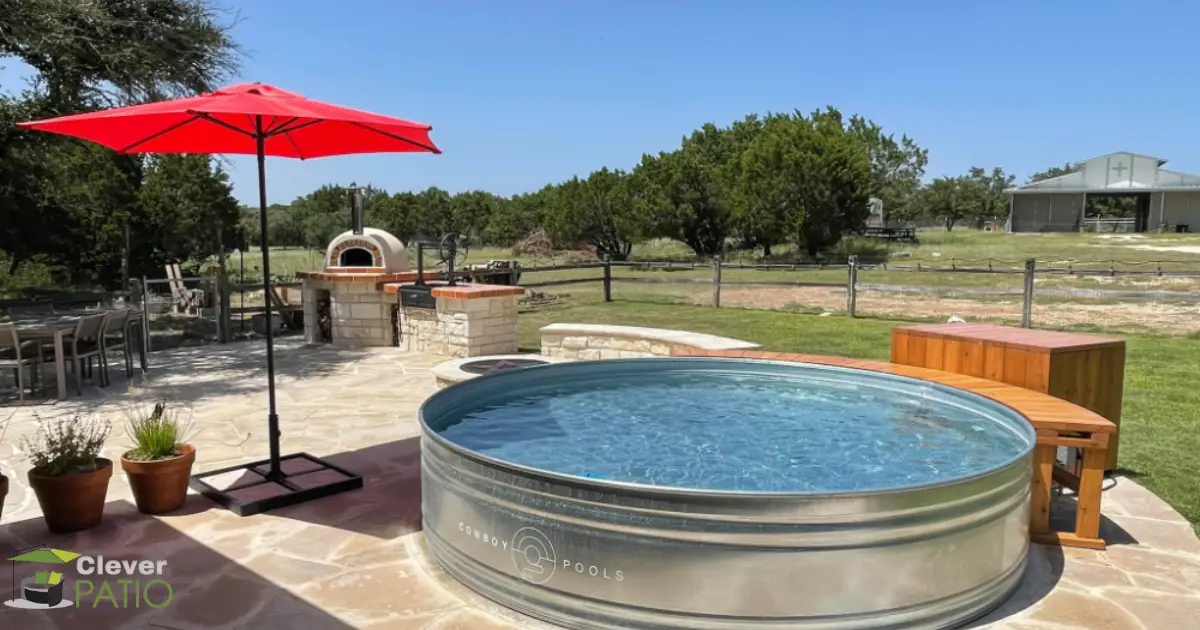If you’re looking to enjoy the warmth and ambiance of a campfire without leaving the comfort of your home, a Solo Stove may be the perfect option.
However, if you have a covered patio, you may wonder if it’s safe to use a Solo Stove under it. The answer to that question depends on a few factors, which we’ll explore in this article.

How A Solo Stove Works
First, it’s essential to understand what a Solo Stove is and how it works. A Solo Stove is a portable, stainless steel fire pit designed to burn wood efficiently and with minimal smoke.
It accomplishes this by using a double-wall design that allows air to flow in through the bottom vents and then up through the inner wall, where it ignites the gases produced by the burning wood. This design not only reduces smoke but also creates a hotter, more complete burn that produces less ash.
Can You Use a Solo Stove Under Covered Patio?
Now, let’s get back to the question of using a Solo Stove under a covered patio. The first thing to consider is the size of your patio and the distance between the stove and any overhang or ceiling.
It is recommended that you use the Solo Stove in a well-ventilated area with at least 6 feet of clearance on all sides, including above. This distance is crucial because the heat generated by the fire can damage nearby surfaces, such as wood, vinyl, or fabric.
If you have a small patio or a low overhang, you may not be able to meet this clearance requirement. In that case, it’s best to err on the side of caution and avoid using the Solo Stove under the covered patio.
Instead, consider moving the fire pit to an open area of your yard or driveway where it has plenty of room to breathe.
Assuming you have sufficient clearance, the next thing to consider is the type of material your patio cover is made of. Solo Stove recommends that you do not use the fire pit on any combustible surfaces, including wood, dry leaves, or grass.
Therefore, if your patio cover is made of wood, it’s best to avoid using the Solo Stove under it. The heat generated by the fire pit can cause the wood to ignite or warp, creating a serious fire hazard.
If your patio cover is made of a non-combustible material, such as metal or concrete, you may be able to use the Solo Stove under it.
However, you should still exercise caution and monitor the fire pit closely. Make sure that no embers or ash are landing on the patio cover or any nearby surfaces, and keep a fire extinguisher or water source nearby just in case.
Another factor to consider is the height of your patio cover. If it’s too low, smoke from the Solo Stove can become trapped under the overhang and create a smoky, unpleasant environment.
Solo Stove recommends that you use the fire pit in a well-ventilated area, which means that smoke should be able to rise freely into the air. If your patio cover is too low, it may impede the flow of smoke and create an uncomfortable atmosphere.
Conclusion
In conclusion, whether or not you can use a Solo Stove under a covered patio depends on several factors, including the size of your patio, the type of material your patio cover is made of, and the height of the overhang.
If you have a small patio or a low overhang, it’s best to avoid using the fire pit under it. If your patio cover is made of wood, it’s also best to steer clear of the Solo Stove.
However, if you have a non-combustible patio cover and sufficient clearance, you may be able to enjoy your Solo Stove under the covered patio.




Leave a Reply